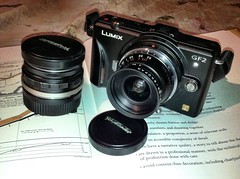 My wife and I both have the same start in photography. The manual focus, manual exposure SLR manufactured by Cosina as an OEM. In my case it was the Ricoh KR-5 Super II (Pentax K mount) and her's was the Nikon FM10. And we've made the switch to digital, with my buying a digital SLR when my favorite film was no longer available at the local photography store. In addition, we've stopped using digital compacts when we both switched to using iPhone, since the camera included in that was close enough in quality to make a digital compact superfluous. To this I've added one of the new class of cameras, a mirrorless interchangable lens camera (MILC). Specifically, the Panasonic Lumix GF-2, which is a Micro Four Thirds (M4/3) camera.
My wife and I both have the same start in photography. The manual focus, manual exposure SLR manufactured by Cosina as an OEM. In my case it was the Ricoh KR-5 Super II (Pentax K mount) and her's was the Nikon FM10. And we've made the switch to digital, with my buying a digital SLR when my favorite film was no longer available at the local photography store. In addition, we've stopped using digital compacts when we both switched to using iPhone, since the camera included in that was close enough in quality to make a digital compact superfluous. To this I've added one of the new class of cameras, a mirrorless interchangable lens camera (MILC). Specifically, the Panasonic Lumix GF-2, which is a Micro Four Thirds (M4/3) camera.
 The GF-2 is positioned within Panasonic Lumix Micro 4/3 line as the consumer (vice enthusiast) MILC without a built in electronic viewfinder (i.e. composition etc. has to be done through a back panel LCD) (Note: it has been superseded by the even smaller GF-3. When buying consumer electronics, I tend to buy one generation behind the current. It is alot cheaper.) (The enthusiast counterparts are the GF-1/GX-1) What makes this feasible is the fact that the back panel LCD screens have reached a level of quality that makes them competitive with traditional SLR viewfinders for composition, focusing, and judging exposure. However, it is not quite as good. And the fact that the viewfinder is not integrated means that you are composing and shooting with the camera held in front of you rather than in contact with your body, which reduces the potential stability. But not having the reflex mirror based viewfinder means that there is no need to accomodate the mirror, so the camera can be very small (front to back).
The GF-2 is positioned within Panasonic Lumix Micro 4/3 line as the consumer (vice enthusiast) MILC without a built in electronic viewfinder (i.e. composition etc. has to be done through a back panel LCD) (Note: it has been superseded by the even smaller GF-3. When buying consumer electronics, I tend to buy one generation behind the current. It is alot cheaper.) (The enthusiast counterparts are the GF-1/GX-1) What makes this feasible is the fact that the back panel LCD screens have reached a level of quality that makes them competitive with traditional SLR viewfinders for composition, focusing, and judging exposure. However, it is not quite as good. And the fact that the viewfinder is not integrated means that you are composing and shooting with the camera held in front of you rather than in contact with your body, which reduces the potential stability. But not having the reflex mirror based viewfinder means that there is no need to accomodate the mirror, so the camera can be very small (front to back).
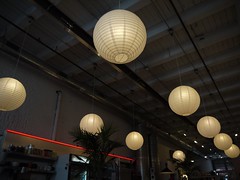 The other major compromise is the use of the M4/3 sensor, which has 1/4 the area of a traditional 35mm film (compared to most digital SLRs, which use an APS-C sensor with 1/2 the area of a traditional 35mm film). While this is many times greater than digital compacts, so comparing with digital SLRs makes more sense than comparing it to compacts, the difference is noticeable in low light. The advantage of this is, again, the camera could be made smaller.
The other major compromise is the use of the M4/3 sensor, which has 1/4 the area of a traditional 35mm film (compared to most digital SLRs, which use an APS-C sensor with 1/2 the area of a traditional 35mm film). While this is many times greater than digital compacts, so comparing with digital SLRs makes more sense than comparing it to compacts, the difference is noticeable in low light. The advantage of this is, again, the camera could be made smaller.
There are plenty of places for technical reviews and reviews from the point of view of a range of photography styles. But what follows is where the Micro four-thirds Lumix GF-2 fits into my photography.
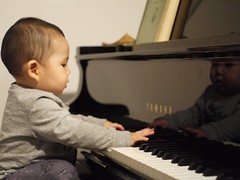 1. It is small and still takes reasonable quality pictures. I can tell the difference on sight between my Digital SLR pictures and compact or iPhone pictures. The micro four-thirds not as much. The GF-2 in particular is so small, I can put it in a jacket pocket when I use my Panasonic Lumix G 14mm F/2.5 lens. Doing this, with a second lens in the other pocket used to be the ideal style for going on a photoshoot with rangefinders, but 35mm film based rangefinders required a very big pocket. I've even put the GF-2 in my front pants pocket (but it is rather snug in there).
1. It is small and still takes reasonable quality pictures. I can tell the difference on sight between my Digital SLR pictures and compact or iPhone pictures. The micro four-thirds not as much. The GF-2 in particular is so small, I can put it in a jacket pocket when I use my Panasonic Lumix G 14mm F/2.5 lens. Doing this, with a second lens in the other pocket used to be the ideal style for going on a photoshoot with rangefinders, but 35mm film based rangefinders required a very big pocket. I've even put the GF-2 in my front pants pocket (but it is rather snug in there).
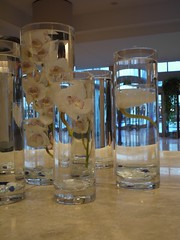 2. There is a saying, the best camera is the one you take with you. I can take the GF-2 with me when I am carrying a bag that has other things, like my diaper bag when I'm with my son. My digital SLR basically demands its own bag because of its size (and I have a Pentax K-x, one of the smallest digital SLRs on the market). I bring it with me on work trips, because it does not take a lot of room. Similarly, we keep this camera out on a shelf so that it is readily accessible. It also means my wife will use it, since she never considers it worth the effort to bring the digital SLR.
2. There is a saying, the best camera is the one you take with you. I can take the GF-2 with me when I am carrying a bag that has other things, like my diaper bag when I'm with my son. My digital SLR basically demands its own bag because of its size (and I have a Pentax K-x, one of the smallest digital SLRs on the market). I bring it with me on work trips, because it does not take a lot of room. Similarly, we keep this camera out on a shelf so that it is readily accessible. It also means my wife will use it, since she never considers it worth the effort to bring the digital SLR.
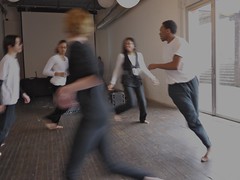 3. Composition, focusing, and shooting can be done from the LCD screen. This picture of the dancers was taken while holding my 1 year old son in my lap. When using M4/3 lenses with auto focus and auto exposure, you can touch the point on the screen that should be where focus and exposure should be evaluated. And this is important if I happen to be holding something else. Like a baby. So putting a camera to my eye is not practical.
3. Composition, focusing, and shooting can be done from the LCD screen. This picture of the dancers was taken while holding my 1 year old son in my lap. When using M4/3 lenses with auto focus and auto exposure, you can touch the point on the screen that should be where focus and exposure should be evaluated. And this is important if I happen to be holding something else. Like a baby. So putting a camera to my eye is not practical.
 4. Use of other system lenses. One of the side effects of being able to make the camera small and the lack of the mirror means that the register (distance from the mount to the sensor) can be very small. And since the sensor is also small, this is even smaller than my old rangefinder lenses (which also had this quality compared to SLRs). So, with an adapter (which increases the distance from the mount) I can use any of my old lenses. In particular, this lets me use my rangefinder lenses that have been sitting in a closet for the past two years. Now, this means that these lenses are effectively manual focus, and only aperture priority exposure (no shutter priority since the camera cannot control the lens), but since I generally like shooting that way anyway, that is fine.
4. Use of other system lenses. One of the side effects of being able to make the camera small and the lack of the mirror means that the register (distance from the mount to the sensor) can be very small. And since the sensor is also small, this is even smaller than my old rangefinder lenses (which also had this quality compared to SLRs). So, with an adapter (which increases the distance from the mount) I can use any of my old lenses. In particular, this lets me use my rangefinder lenses that have been sitting in a closet for the past two years. Now, this means that these lenses are effectively manual focus, and only aperture priority exposure (no shutter priority since the camera cannot control the lens), but since I generally like shooting that way anyway, that is fine.
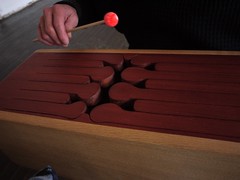 5. Familiar operating system. For my manual aperture lenses, the operation is very familiar. Aperture ring for aperture, a thumbwheel for shutter speed or exposure compensation. And by pushing down on the thumbwheel, you get a zoom in effect to assist in manual focusing if you want it. The major missing piece is the lack of a wheel to change the exposure mode (e.g. program, aperture priority, shutter priority, etc.), instead you have to work through the touchscreen. But since I usually looked at that dial when changing the exposure mode it was not much more of a hassle.
5. Familiar operating system. For my manual aperture lenses, the operation is very familiar. Aperture ring for aperture, a thumbwheel for shutter speed or exposure compensation. And by pushing down on the thumbwheel, you get a zoom in effect to assist in manual focusing if you want it. The major missing piece is the lack of a wheel to change the exposure mode (e.g. program, aperture priority, shutter priority, etc.), instead you have to work through the touchscreen. But since I usually looked at that dial when changing the exposure mode it was not much more of a hassle.
And on the other side, some shortfalls, mostly compared to my digital SLR
1. The lenses I have are in the f/2.5 range, while for my SLR I was using lenses that were f/1.4 or f/1.7. The loss of a stop is noticeable in working. Although if I was truly trying to shoot in a low-light situation, I would bring my SLR since the larger sensor also makes a difference in image quality in this situation.
2. Low light (high ISO) is worse. Probably because of the smaller sensor. But it is much better than with digital compacts or smartphone cameras.
3. Black and white. The monochrome setting is Program exposure. And you cannot even set over- under- exposure (which I do all the time). I've set the custom programs to be black and white with over and under exposure as a workaround, but that is not the same thing. (and I like using black and white)
Really that is it.
The biggest effect this has on my photography is that I can bring it with me when I'm carrying a baby along with all the other attendent supplies. The quality over a smart phone is beyond question, and I would not carry an SLR and a diaper bag at the same time.
If I was starting in photography and not doing gigs, I would recommend the mirrorless interchangable lens cameras such as the micro four thirds lines over a digital SLR. When there is not anything serious riding on preformance, the quality of the pictures from these is close enough to SLR quality, but with a much lower cost in terms of bulk, which makes it much more likely that you would actually have the camera with you when opportunity arises.
For more picture samples, go to my pictures at Flickr taken with the Lumix GF-2
No comments:
Post a Comment